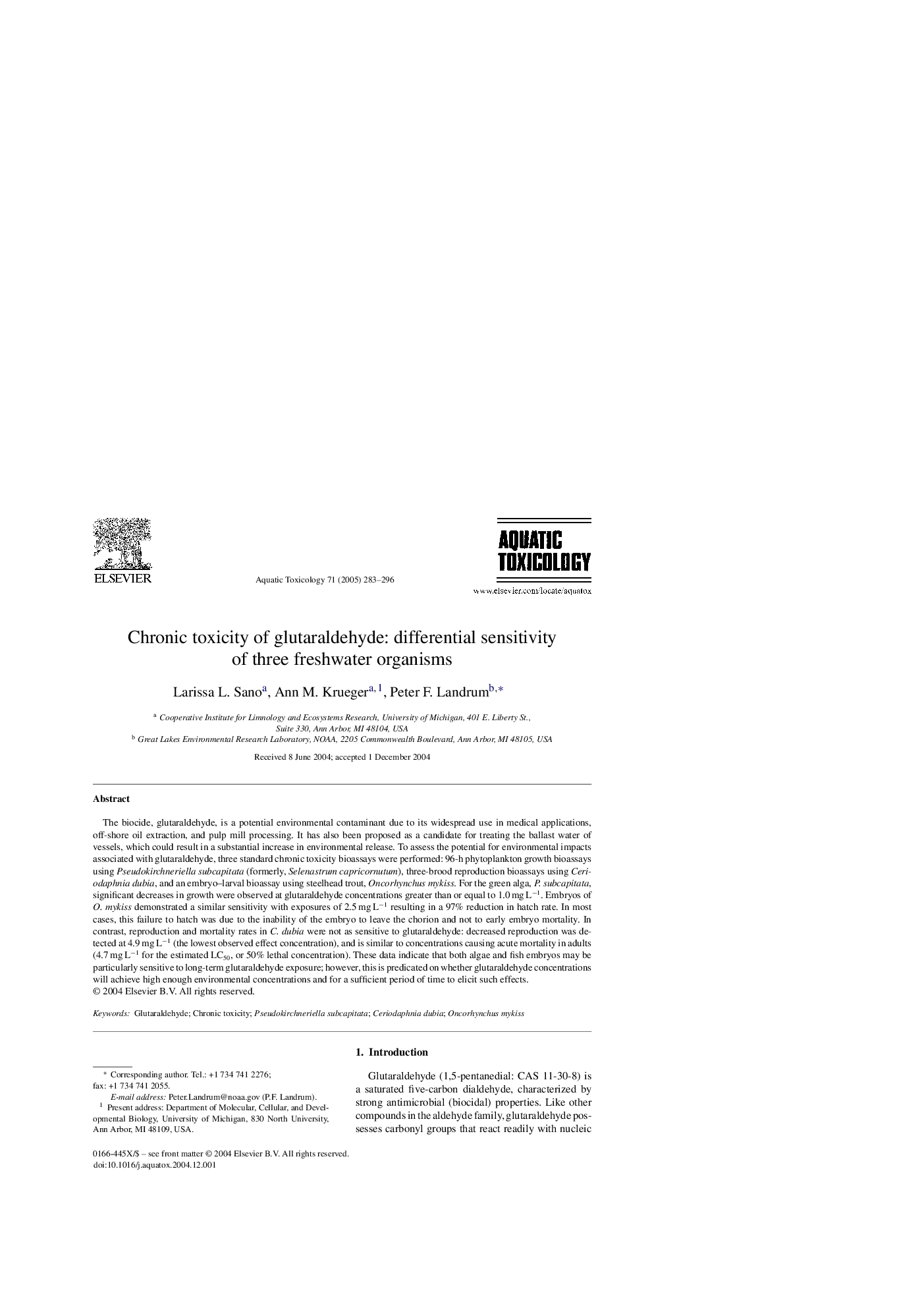| کد مقاله | کد نشریه | سال انتشار | مقاله انگلیسی | نسخه تمام متن |
|---|---|---|---|---|
| 9478223 | 1324780 | 2005 | 14 صفحه PDF | دانلود رایگان |
عنوان انگلیسی مقاله ISI
Chronic toxicity of glutaraldehyde: differential sensitivity of three freshwater organisms
دانلود مقاله + سفارش ترجمه
دانلود مقاله ISI انگلیسی
رایگان برای ایرانیان
کلمات کلیدی
موضوعات مرتبط
علوم زیستی و بیوفناوری
علوم کشاورزی و بیولوژیک
علوم آبزیان
پیش نمایش صفحه اول مقاله

چکیده انگلیسی
The biocide, glutaraldehyde, is a potential environmental contaminant due to its widespread use in medical applications, off-shore oil extraction, and pulp mill processing. It has also been proposed as a candidate for treating the ballast water of vessels, which could result in a substantial increase in environmental release. To assess the potential for environmental impacts associated with glutaraldehyde, three standard chronic toxicity bioassays were performed: 96-h phytoplankton growth bioassays using Pseudokirchneriella subcapitata (formerly, Selenastrum capricornutum), three-brood reproduction bioassays using Ceriodaphnia dubia, and an embryo-larval bioassay using steelhead trout, Oncorhynchus mykiss. For the green alga, P. subcapitata, significant decreases in growth were observed at glutaraldehyde concentrations greater than or equal to 1.0 mg Lâ1. Embryos of O. mykiss demonstrated a similar sensitivity with exposures of 2.5 mg Lâ1 resulting in a 97% reduction in hatch rate. In most cases, this failure to hatch was due to the inability of the embryo to leave the chorion and not to early embryo mortality. In contrast, reproduction and mortality rates in C. dubia were not as sensitive to glutaraldehyde: decreased reproduction was detected at 4.9 mg Lâ1 (the lowest observed effect concentration), and is similar to concentrations causing acute mortality in adults (4.7 mg Lâ1 for the estimated LC50, or 50% lethal concentration). These data indicate that both algae and fish embryos may be particularly sensitive to long-term glutaraldehyde exposure; however, this is predicated on whether glutaraldehyde concentrations will achieve high enough environmental concentrations and for a sufficient period of time to elicit such effects.
ناشر
Database: Elsevier - ScienceDirect (ساینس دایرکت)
Journal: Aquatic Toxicology - Volume 71, Issue 3, 10 February 2005, Pages 283-296
Journal: Aquatic Toxicology - Volume 71, Issue 3, 10 February 2005, Pages 283-296
نویسندگان
Larissa L. Sano, Ann M. Krueger, Peter F. Landrum,